#大仏様
Explore tagged Tumblr posts
Text

2023.12.4 ~ 筑前町の巨大わらかかし
1 note
·
View note
Text
大覚寺展

2025.3.15
昨日、仕事終わりに東京国立博物館・平成館でやっている大覚寺の展覧会に行ってきました。
初めの方に大きい仏像「五大明王像」(一部重要文化財)が並んでいて、その後、小さめの五大明王像(全て重文)がそれぞれケースに入れられて並んでいたのですが、最初レプリカかと思って💦
すごくきれいで迫力はあるしで、すごいなぁとじっくり観ているうちに、もしや…と説明文を見に行くと平安時代の本物でした。
仏像にさほど興味がわかない私も、炎を背負い、顔複数&手がいっぱい出ている系の仏像はテンションが上がります(笑)


仏像の後、まず目がひかれたのはウサギがたくさん描かれた腰障子。手前の黒ウサギの寝��♡
でもふと、子供の頃に聞いた『仏教は肉を食べてはいけないのに、ウサギは鳥だとして食べていたから、一匹二匹ではなく、一羽二羽という数え方になっている』という話を思い出し、この寺と兎の組み合わせは、はたして可愛いと思って観ていいものか…と複雑な思いに。



展覧会後半には襖絵もいくつかあり、鳥が所々に描かれていて、しかも仕草もいろいろで、観ていて楽しかったです♫
ちなみに展覧会で圧倒的に人が並んでいたのは刀でした。どうやらゲームの影響で刀ブームらしく、若者が熱心に鑑賞していました。(そのせいかグッズも刀関係多かったです)
それこそ私は刀は全く興味がないので、今回に限らずいつもほぼ素通りなのですが、人それぞれ違うワクワクポイントがあるのって面白いですね。

#tokyo national museum#tokyo national museum heiseikan#art#Daikakuji Temple#tokyo#ueno#大覚寺展#東京国立博物館#東京国立博物館平成館#美術館巡り#美術展#美術#仏像#京都#最後の写真は平成館を出て見えたお月様とスカイツリーです
0 notes
Text
仏とは何か。先祖や死人ではないらしい。仏教でいわれる仏とはどんな存在か。どんな力があるのか。人々にどんな救いをもたらすのかなど詳しく解説されている。
0 notes
Text
父方のじーちゃんが書いたらしき仏間額
読める方教えて下さい🙏
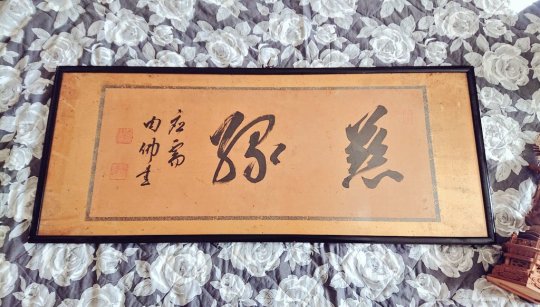
掛軸や額が収納してある箱の中を漁ってたら
木彫りの仏像が埋もれてて、 最初観音様かな?と思ったけど、なんか蓮に乗ってるし立ってるし様子が違う...検索したら、なんと!阿弥陀如来様でした🙏
東阿弥陀如来は真宗大谷派(東本願寺)のご本尊
こんなとこにガラクタと一緒に紛れてたから、息苦しい思いされてたのでしょうか?
だから我が家に災難が起きてたのだろうか?
東本願寺は、西に向かってお祈りするらしいので、すぐに埃を払って、東向きに飾って線香を🌺

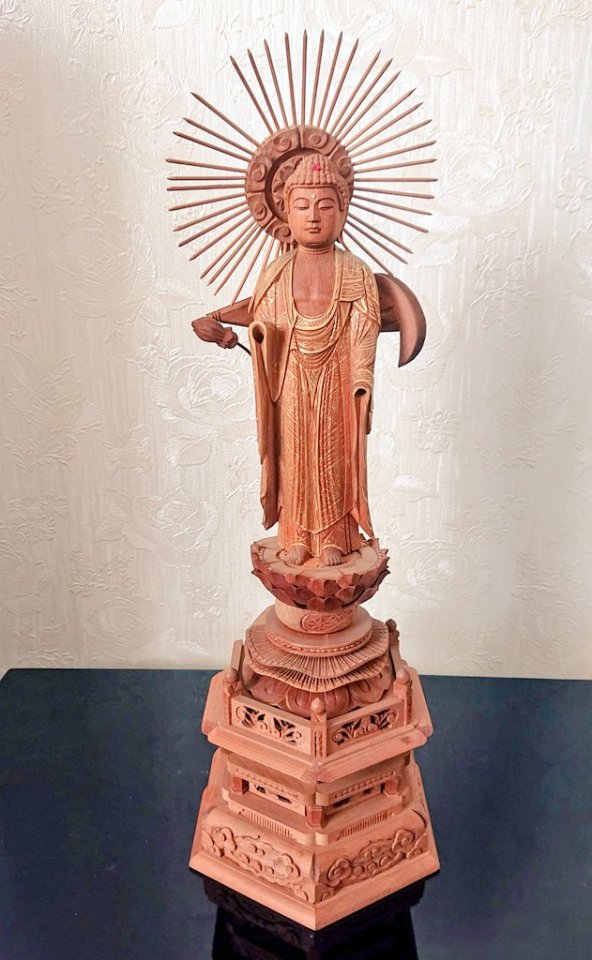
しかし手が無い👌��のよね
こんなcuteな立雛の掛軸も🎎😍

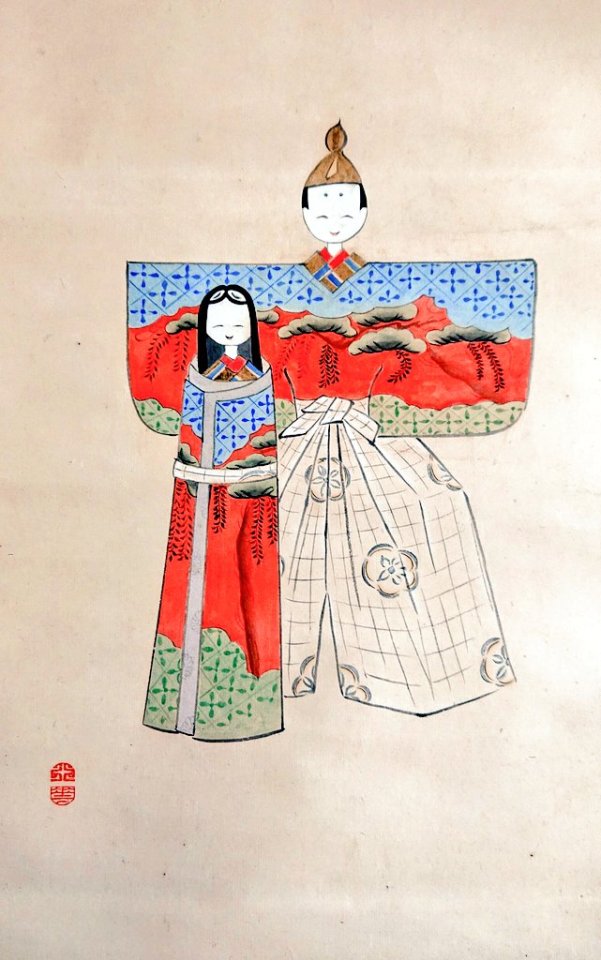
松ノ木から藤の花が垂れ下がってるみたいな感じの着物ですね👘☁️
男雛も女雛も愛嬌のある笑顔で🎎
今年のひな祭りはこれでいい😁💗

#東阿弥陀如来#阿弥陀如来#南無阿弥陀仏#真宗大谷派#浄土真宗#東本願寺#立身出世#西方浄土#仏様#仏間額#弥助#渓川#書道師範#壁掛けインテリア#仏像#彫刻#木彫り#ひな祭り#立雛#節句#節句掛け#掛軸#掛け軸#桃の節句#お雛様🎎
0 notes
Text
お釈迦様、地蔵菩薩様、奈良の大仏様のメッセージ
youtube
0 notes
Quote
さっきラジオで言っていた、『自分は無宗教で神様も仏様も信じてない、だけどお地蔵さんを蹴れるかっていうと無理だし賞味期限切れのおにぎりを踏めるかっていうと無理』という話、とても大事な気がする。 そういうのが根っこにあるものとして暮らすけど、たまにそれが無い人に出会うと怖いと感じる。
ずーぽこさんのツイート (via over-sleep)
407 notes
·
View notes
Text






傳谷 英里香は、日本の女優。千葉県出身。KON-RUSH所属。女性アイドルグループ「ベイビーレイズJAPAN」のリーダーであった。 ウィキペディア
生まれ: 1995年11月2日 (年齢 29歳), 千葉県
映画: なれたら
身長: 158 cm
事務所: レプロエンタテインメント(-2022年7月); KON-RUSH(2022年11月-)
血液型: B
日本人の父とフィリピン人の母との間に生まれた。洗礼名はアンジェラ(Angela:イタリア��で天使の意味)。日本語の語順ではアンジェラ傳谷英里香となる。
スポーツ全般が得意。公式プロフィール記載の特技であるバスケットボールは小中の7年間部活に入部しており、中学生時代には副キャプテンを務めていた。同じ時期、水泳部、陸上部も掛け持ちしていた。スキューバダイビングは2017年夏に日帰りで資格を取得。
運動能力反射神経ともにメンバーの中ではずば抜けており、ベイビーレイズのメンバーと運動で争う企画では独壇場であった。
ピアノも幼少時より習っており、「第17回Japan Expo」のため渡仏した折には撮影で訪れたモンマルトルの丘にて両親の思い出の曲であるサザンオールスターズの「TSUNAMI」を演奏し、居合わせた現地の人や観光客の注目を集めた。
ベイビーレイズJAPAN結成以前はモデルまたはソロアーティスト志望であり、黒木メイサや安室奈美恵を目標としていた。このため結成当初はアイドル活動に全く乗り気では無く、自身のTwitterやブログなどで「元々アイドルというものが苦手でやりたくなかった。」とも語っていた。しかし、ベイビーレイズJAPANのメンバーとして活動していくにつれて「今は(アイドルが)好きです。ちゃんと言えます。」「前の自分に会ったら引っぱたきたいくらい全然違う世界だった。」と思うようになり、アイドルに対する考え方も変わっていったという。
ベイビーレイズ時代は「やるならとことん」を座右の銘としてことあるごとに明言しており、キャッチフレーズにもなり実際の行動規範ともしていた。
10代の間に体験しておきたいと、20歳の誕生日前に群馬県のみなかみバンジーでバンジージャンプを体験した。
ベイビーレイズ(JAPAN)時代はハーフと言うこともあり漢字が苦手キャラであったが、読書家であり実際はそれほど苦手ではない。自身の苗字の「傳」の字もバランスよく書きこなし、客観的には達筆の部類に入る。
『世界ふしぎ発見!』(TBS)の解答者として初めて出演した回を含め合計3度{2019年5月時点}もの全問正解のパーフェクト賞を獲得し、���理力・考察力に秀でた才女ぶりも披露している。
ロック音楽が好き。2017年1月に名古屋で共演してからSUPER BEAVERの大ファンとなり、1人でワンマンライブに参戦するほどである。女性シンガーでは阿部真央やあいみょんが好き で、ファンクラブイベントで彼女らの曲を歌唱披露したこともある。
読書好きであり、仕事の合間を縫って様々な本を読んでいる。哲学書や自己啓発本も好んで読む。小説も幅広く読むが、川村元気や住野よるの作品に造詣が深い。漫画はほとんど読まないが、ファッション関係の仕事に関心が強いこともあり、『ランウェイで笑って』は好きな作品であると表明している。
映画も非常に好きで、オフや仕事の空き時間を縫ってよく鑑賞する。幅広いジャンルを鑑賞するが、ドキュメンタリー物が好み。ファンイベントでは、おススメの映画として『グッド・ウィル・ハンティング/旅立ち』、『湯を沸かすほどの熱い愛』、『ワンダー 君は太陽』、『ルーム』、『君が生きた証』を挙げ、作品に対する熱い想いを大いに語った。
242 notes
·
View notes
Quote
今から74年前、1950年の10月7日、中共軍が突然チベットに侵略をはじめました。軍隊も同盟国もなく、ただただ仏教を信じ平和を愛する国であったチベットは、あっという間に全土を占領されました。それから74年間、チベット人は信じるものを奪われ奴隷のように虐げられており、その事実を世界に向けて訴えるために僧侶が焼身自殺をするくらい追い詰められていますが、世界平和を標榜するUN(いわゆる国連)を、はじめとする国際社会は彼らに救いの手を差し伸べようとしません。それをいいことに、他にもウイグル、モンゴルなどで民族抹殺政策を現在進行形で行い、南シナ海や東シナ海においても傍若無人な振る舞いをしています 日頃は自由だ平等だ人権だと建前を金科玉条のごとく唱えている西欧諸国も然り、残念ながら国際社会の現実は力こそ正義であり、大義名分は後からついてくるものであり、口先だけで世界平和を唱えても何も変わりません 斯様な厳しい現実が存在しているにもかかわらず、我が国はいまだに米軍に頼り切った国防体制で、自衛隊を憲法に明記するか否かで揉めています。それどころか政官財の中共シンパは、過去、我が国の資金と技術が、中共を経済大国に育て上げ、チベットをはじめとするその周りの国に多大な迷惑をかけてきたことに対して反省のかけらもなく、日中友好という美名のもと、これからも中共と経済協力するべきだと声を上げています はっきりと言えば、我が国で「ヘイワ」だ「ユウコウ」だと、ひたすら中共を礼賛しながら資金や技術を援助する一方で自らの私腹を肥やしてきた人たちは中共がウイグル、チベット、モンゴルなどの人々に対して行っている犯罪行為の共犯者です。 我々日本人は、あらぬ過去の罪に謝罪するよりも、自分たちが蒔いた種により、今こうしている間にも行われている人類に対する犯罪行為を阻止すべき義務があるのではないでしょうか。今、ウイグルチベット、南モンゴル、香港で起こっている出来事は他人事ではありません 頼りにするアメリカが弱体化しているにもかかわらず、いまだに敵の基地は攻撃できないなどというレベルを議論する国会、国防を蔑ろにしている我が国はこのままでは74年前のチベットと同じ道を歩んでもおかしくはない。
Xユーザーの一色正春さん / X
151 notes
·
View notes
Text
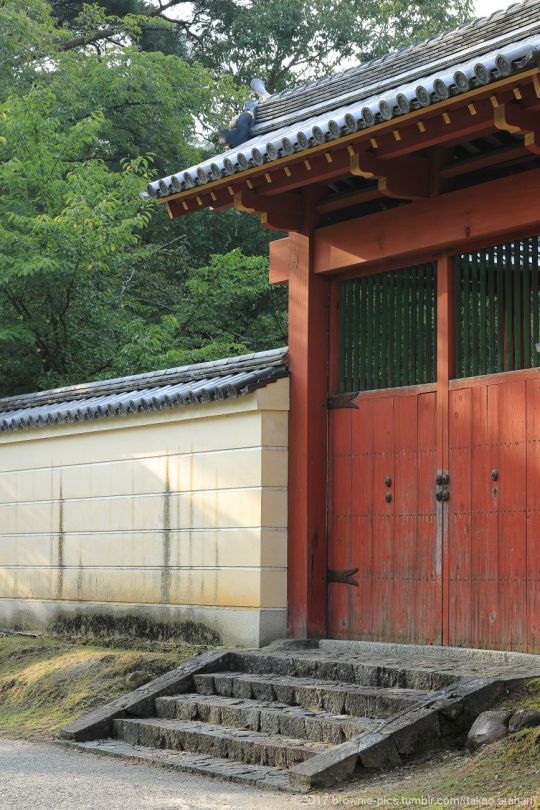

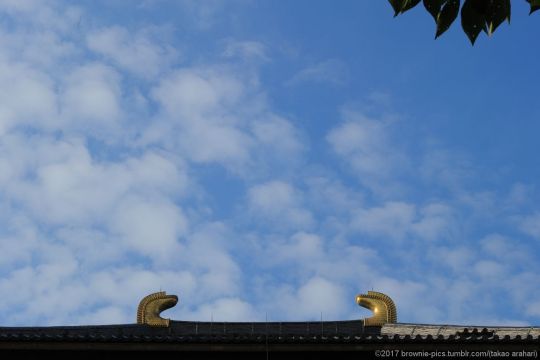







'24.8.4 東大寺大仏殿外郭、猫段にて
開いてるのを見たことがない大仏殿北側の小門に夏の日差しが差し込み始めた朝。外郭に沿って東へ進み、裏参道通って二月堂方面へ・・と思ったのですが、そちらを望むとカッとしたお日様がギラギラと照り付けていて見るからに暑そう。写真撮ってもフレア出てくるし・・。
なのでスタコラと方向転換して、大きな木々の日陰ある外郭沿いを猫段方面へ。
これだけ暑いと、どうしても日向避けて移動しちゃいます・・。
#奈良#nara#奈良公園#nara park#日本#japan#東大寺#todaiji temple#夏#summer#朝#morning#酷暑#too hot#photographers on tumblr#natgeoyourshot
147 notes
·
View notes
Text
昭和の大修理の際の西岡常一棟梁の言葉をまとめた、「法隆寺を支えた木」をぜひ読んでみてください。 1400年経ったヒノキにかんなをかけると、新品のヒノキと同じ香りがするそうです。 瓦屋根の下地には、杉の樹皮が使用されていますが、これも1000年以上前のものだそうです。 1200年前のヒノキですが、新品のヒノキと同等の強度があるという実験が紹介されていました。 ヒノキは、切り出した後から、結晶化が進行し、強度を増していくそうです。 もっとも強度が上がるのは、切断した約200年後。 すべての結晶化が終わってから、強度の劣化が始まると想定されていますが、 1200年経った、現在、切り出したときと同じ強度にまで強度が低下したのではないか、ということでした。 五重塔は、芯柱が子供がしゃがめるぐらい?浮いているらしく、 西岡常一さんは、「たぶん建築中に腐ってきたから、切断したんじゃないでしょうか?」とおっしゃっていました。 キッチンも御風呂場もなく、冷暖房による結露も発生せず、通気性抜群で、雑草はもちろん、日差しを遮る樹木もないような状況であれば、木材は腐るはずがありません。 法隆寺だけではなく、薬師寺の如来、菩薩、東大寺の仁王像、興福寺の阿修羅像、古くからある仏像などは、細い指先までも、一切腐りません。 それより不思議なのは、弥生時代の遺跡から、地下水につかった状態の杉で作られた舟が残っていたり、古墳時代からきれいな壁画が残っていた高松塚古墳を現代人が発掘し、以前と同じ環境を人工的に作り出したら、大量のカビが発生して、壁画が消えかけてしまったりすることのほうが不思議です。 法隆寺では鉄をたたいて作った釘が現在でも活躍しています。 いったん、外した��ですが、同じような釘を作ろうとすると、とてつもない手間がかかるようで、同じものを使用することにしたそうです。 なんでも、鉄を何層にも重ねてたたき、さらに重ねてたたくことによって、木の年輪のように作り、奥までさびが進行しないようになっているそうです。 法隆寺に至るまでにたくさんの寺社仏閣が建てられましたが、いずれも数十年で腐ってしまいました。 山田寺など。 現在でも、木曾のヒノキを使用して、伊勢神宮が作られますが、20年ごとに建て替えています。 原因は、ヒノキの柱を地面に埋める工法を採用しているからです。 法隆寺を含めた古いお寺は、仏様を守りたいという先人たちの知恵の結晶なのでしょう。 最近では、現代人が文明を持ち込むため、たくさんの木造建築が破壊されています。 法隆寺の昭和の大修理では、金堂壁画の絵を模写して、保存しようとしていた人が、寒いからと暖房器具を持ち込んだために火事が発生し、法隆寺の金堂は全焼してしまいました。 金閣寺は、放火によって、全焼してしまいました。 東大寺の南大門は、クレーン車が、通行する際に、クレーンが上がったままになっていることに気づかず、南大門の主要建築材に多大なる破損を与えてしましました。
66 notes
·
View notes
Text
Trial 1 - TASK Voice Drama (Side-by-Side English Translation)
Google Docs version of this translation. If using/reuploading/reposting this translation, do not remove the translator's notes and do not change the translations. Credit and link if using. Any additional Translator's Notes will be found in the replies. Check the original post before reblogging as TLs are occasionally revisited and edited.
ミルグラム監獄内尋問室 MILGRAM PRISON INTERROGATION ROOM 薄暗い尋問室。 尋問室でコトコが椅子に座っている。足を組み、堂々とした様子。 A dimly lit interrogation room. Inside, Kotoko is sitting in a chair. She crosses her legs, looking regal. コトコ 「……」 KOTOKO: … ギィっとドアが開く。 The door creaks open. コトコ 「随分遅かったね。待ちくたびれたわ」 KOTOKO: You’re awfully late. I’m tired of waiting. [T/N: Right from the start, KOTOKO establishes her femininity through her manner of speaking and the usage of the わ (wa) particle.] エス 「……囚人番号10番、コトコ。尋問を始める」 ES: …Prisoner Number 10, KOTOKO. I’m going to begin the interrogation. コトコ 「どうしたの?仏頂面をして」 KOTOKO: What’s the matter? You look so glum. エス 「……その節はどうも」 ES: …Thank you for your time. コトコ 「ふっ、お礼を言う顔じゃないわよ」 KOTOKO: Hm, that face doesn’t seem so thankful. 早足でコトコの向かいの椅子に近づき、座るエス。 ES quickly walks to the chair opposite of KOTOKO and sits down. エス 「お前には山程訊きたいことがあるからな。ひとまず名前と年齢」 ES: There’s a lot of things I want to ask you. First, your name and age.
ゆずりはことこ Yuzuriha, Kotoko [T/N: KOTOKO is the only prisoner in the Trial 1 script book whose full name furigana (reading guide for kanji) is spelled in hiragana instead of katakana.] コトコ 「紅琴子。20歳。大学生で、自主休学中。あとは、そうね。現段階でこれ以上は自分のことについて話す気はないわ」 KOTOKO: Kotoko Yuzuriha. 20 years-old. University student currently on a voluntary leave of absence. Other than that, well- At this stage [of the conversation], I don’t feel like talking any more about myself. エス 「何?」 ES: What? コトコ 「そちらの手の内がわからない間はね」 KOTOKO: Not until I know what your intentions are. コトコのまったく怖気づかない態度に、エスは眉をひそめる。 ES frowns at KOTOKO’s fearless* attitude. [T/N: まったく怖気づかない (mattaku kowa kidzukanai) means “completely feeling without fear”. There’s a slight emphasis on the feeling of fear (or lack thereof) rather than just an adjective-descriptor.] エス 「ああ?一体どういうことだ」 ES: Huh? What the hell does that mean? コトコ 「その前に、最終確認。ミルグラム……ここにいる全員がヒトゴロシというのは確かなの?」 KOTOKO: Before we get to that, let’s confirm something; MILGRAM… Are you certain everyone here is a “murderer”? [T/N: ヒトゴロシ (hitogoroshi) was translated into “ “murderer” ” (enclosed in quotation marks) rather than “murderer” as the katakana spelling creates an emphasis, an ostranenie, especially within the context of what KOTOKO is saying.] エス 「あぁ、ミルグラムはお前たち10人をヒトゴロシだと言っている。ミルグラムの前提ルールだ。揺るがない」 ES: Yeah, MILGRAM says that all ten of you are murderers. That is MILGRAM’s ruled assumption. It is absolute. コトコ 「……ふぅん」 KOTOKO: …I see. エス 「それがどうかしたか?」 ES: What about it? コトコ 「看守であるあなたも、これをさせている存在の意思をはっきりとは知らないのね」 KOTOKO: Even you, the Warden, don’t know the intentions of the entity making you do this. エス 「何が言いたい……」 ES: What are you trying to say…? コトコ 「ミルグラムが言っている――看守さん、嘘がつけないタイプね……もしくは迷いがあるのか。ま、誠実で好ましいと思うよ」 KOTOKO: MILGRAM says that the Warden-san type cannot lie… or maybe you’re just unsure of yourself. Well, either way I think that’s rather likeable. エス 「……何様だ、貴様」 ES: …Who do you think you are? コトコ 「命の恩人様かな」 KOTOKO: Maybe the savior of your life? エス 「くっ……」 ES: Tch… 得意げなコトコ。 KOTOKO looks proud. エス 「そもそもお前、何故あのとき尋問室にいた。助けられたのは事実だが。勝手な行動を許した覚えはないぞ」 ES: Why were you even in the interrogation room in the first place? Yes, you may have saved me but I don’t recall ever giving you permission to act at your own convenience. コトコ 「そうかしら。ミルグラムはそういう風にデザインされているように見えるけど?」 KOTOKO: Is that so? Doesn’t it seem as if MILGRAM was designed in that manner? [T/N: そうかしら (soukashira) “Is that so?” is a phrasing used more often by women.] エス 「デザイン……。囚人の、勝手な行動を赦すように……」 ES: Designed… To permit prisoners to act freely… コトコ 「看守さんがしているんでしょう?鍵だってかかっていなかったわよ」 KOTOKO: Isn’t that what you’ve been doing, Warden-san? The door wasn’t even locked, you know. エス 「……僕が……?」 ES: …I…did that…? コトコ 「私がカヤノミコトの行動を疑い、注意深く動向を追うような人間であることも、許容したのはあなたでしょ」 KOTOKO: You were the one who permitted me to be suspicious of Mikoto Kayano’s activities and to monitor him carefully, weren’t you? [T/N: KOTOKO pronounces 私 as “atashi” which is a feminine way of identifying and referring to oneself, a first-person pronoun.] エス 「……人間性の観察……赦す・赦さないが確定するまで……」 ES: …Observation of human behavior…until judgement is decided to forgive or not forgive… コトコ 「そういうことでしょ?」 KOTOKO: Exactly, right?
コトコの言葉に上の空のエス。耳鳴り。いつもと雰囲気が違う。 ES is distracted by KOTOKO’s words, a ringing in their ears. The vibes feel different from usual. エス 「なぜ……そんなことを……彼らが喋っているところを見たいから.....、彼らのことをもっと、知りたいから……?」 ES: Why…are you doing this…? Because you want to see them chatter…? Because you want to understand them more…? コトコ 「看守さん?」 KOTOKO: Warden-san? エス 「看守……?僕は……、(わ)たしは……」 ES: Warden…? I’m… Am I… [T/N: Alternatively translated as: “Warden…? I’m… I’m a…” ES switches between the first-person pronoun of 僕 (boku)—typically associated with young masculinities—and the neutral pronoun わたし (watashi).] ダンと床を踏み鳴らすコトコ。 KOTOKO stomps her foot down loudly. エス 「……っ」 ES: …! コトコ 「ぼーっとしないでくれる?尋問の途中でしょ」 KOTOKO: Could you please refrain from spacing out? We’re in the middle of an interrogation, aren’t we? エス 「……あ、あぁ」 ES: …Ah, yeah. コトコ 「ま、終わりなら終わりでいいわ。私からも話があるし」 KOTOKO: Well, if you want to end the interrogation here, that’s fine. I have some things to say as well. エス 「……?」 ES: …? 意識が戻ってきたものの、まだ朧としているエス。 その顔を見たコトコがニヤリと笑う。 ES is slowly returning to their senses, though still in a haze. KOTOKO smirks upon seeing ES’ face. コトコ 「看守さん……いや、エス。私と協力しない?私達は良いパートナーになれるはずよ」 KOTOKO: Warden-san… No- Es. Why don’t we cooperate? We could make great partners. エス 「……協力……だと?」 ES: …us…cooperate? コトコ 「あなたは看守の立場から尋問によって得た情報を、私は囚人の立場から普段の監獄生活で得た情報を、互いに共有しあう。どうかしら?」 KOTOKO: You’ll share the information you gather through interrogations as a Warden and I’ll share what I learn from everyday prison life as a Prisoner. Does that sound good to you? エス 「……ふざけるな」 ES: …Don’t be ridiculous. コトコ 「どうして?悪い話じゃないはずだけど。ほら、カヤノミコトの件は、そのお試しサービスだと思って」 KOTOKO: Why not? It’s not a bad deal. Look- Think of the Mikoto Kayano case as a free trial service. エス 「うるさい、黙れ。クーリングオフだ」 ES: Shut up. That’s enough. The cooling-off period’s over.
おどけるコトコに、取り合わないエス。 ES refuses to play along with KOTOKO’s banter. エス 「僕は看守で、お前は囚人。以上だ」 ES: I’m the Warden, you’re the Prisoner. That is all. コトコ 「ふうん……見た目通り、頭が固いな」 KOTOKO: Hm… You’re just as stubborn as you look. エス 「なんだと?」 ES: What did you just say? 怒りをあらわにするエスに取り合わないコトコ。 ゆっくりと話し始める。 KOTOKO doesn’t pay any heed to ES’ visibly growing anger. She begins to speak slowly. コトコ 「……サクライハルカは、行動に積極性が増している。幼稚で偏執的だが、周囲とのコミュニケーションに興味を持ち始めたようだ」 KOTOKO: …Haruka Sakurai is becoming more proactive. He remains childish and paranoid-like, however he has begun to show an interest in communicating with others. エス 「……?」 ES: …? コトコ 「カシキユノは表面上の変化は少ないが、相手に同調するコミュニケーションが減ったように思える。本来のカシキユノが表出し���じめていると言うべきか」 KOTOKO: Yuno Kashiki hasn’t changed much on the surface, but it appears that her tendency to conform to someone else’s desires in acts of communication has declined. Should we say that Yuno Kashiki’s true self is starting to emerge? [T/N: 相手に同調する (aite ni douchou suru) means “to conform; to be in tune with someone”.] エス 「……おい、何の話だ」 ES: …Oi, what are you talking about? コトコ 「カジヤマフータは明確に変わった。他人への攻撃的な言動が減少傾向にあり、自己正当化、防衛をする言動が増えてー」 KOTOKO: Fuuta Kajiyama has clearly changed. His aggressive speech towards others is decreasing whereas his tendencies to justify and defend himself are increasing— エス 「コトコ!」 ES: KOTOKO! コトコ 「……エスとの尋問を終えた囚人の行動の傾向が、徐々に変化していることに気づいている?」 KOTOKO: …Es, have you noticed the gradual change in the behaviors of the prisoners who have completed an interrogation with you? エス 「……知らん」 ES: …I didn’t. コトコ 「監獄の中から見える景色もある。私はあなた同様、囚人を監視しているから」 KOTOKO: There’s all sorts of things you can see from within the prison. Because I observe the Prisoners just as I observe you. エス 「……お前が何故そんなことをする必要がある!」 ES: …Why would you even have the need to do that?!
コトコの語調がひときわ優しくなる。 懐柔しようとする雰囲気。 KOTOKO’s tone becomes particularly gentle. An air of persuasion coats her words. コトコ 「……協力しましょう、エス。私たちの利害は一致している」 KOTOKO: …Let’s work together, Es. Our interests are aligned. エス 「利害の一致だと。看守の僕と、囚人のお前が……?」 ES: “Our interests are aligned”? Yours, a prisoner, and mine, a Warden? コトコ 「そう……ここに収監されてから、私なりにミルグラムを観察し、考察した」 KOTOKO: That’s right… Ever since I was imprisoned here, I’ve been surveilling and analyzing MILGRAM in my own way. エス 「それが囚人のやることか……」 ES: Is that something a prisoner should be doing…? コトコ 「結果、私の中で出た仮説。ここはシンの善悪を定義する場所。ちなみに、ここでいうシンとは新しいという意味でもあり、まことという意味でもある」 KOTOKO: As a result of doing so, this is the hypothesis I’ve arrived at: This is a place meant to define neo-moralities- to define realities of goods and evils. By “shin”, I mean as in both the meanings of “neo-” and “reality”. [T/N: 善悪 (zenaku) means “good and evil”. シン (shin) was chosen to be translated into “reality” rather than “actuality” because “Actuality refers to the "world verified only in the ego's immediate immersion in action." Reality is the world of "phenomenal experience perceived with a minimum of idiosyncratic distortion and with a maximum of joint validation; while actuality is the world of participation, shared with a minimum of defensive maneuvers and a maximum of mutual activation" (Erikson 1962). シン (shin) was also chosen to be translated into “neo-” instead of “new” as neo- can also include the meanings of “revise; remade; modified” and, based on the context of KOTOKO’s speech, “neo-” is more appropriate to the conversation topic and her intentions.] エス 「シンの善悪……」 ES: A neo reality of moralities. コトコ 「既に世界には法律という罪の基準が存在するにも関わらず、何故ヒトゴロシを集めて有罪無罪を改めて問う必要があるのか?囚人といいながら拘束すらせずに自由に行動させ、その者の人間性を観察しているのか?人の心を覗き、判断する必要があるのか?」 KOTOKO: Although laws already exist in the world as a basis to define sin, why does MILGRAM find it necessary to gather Murderers and re-examine what their culpabilities and innocences are? You call them “prisoners” yet they are allowed to act freely and unrestrained, so is it to observe humanity? Is there any need in peering into someone’s heart to cast judgement? [T/N: ヒトゴロシ (hitogoroshi) was translated into “Murderer” rather than “murderer” as the katakana spelling creates an emphasis, an ostranenie; a value capture that simplifies and quantifies especially within the context of what KOTOKO is saying.] エス 「……」 ES: … コトコ 「こんなことをしようとするのは、今の善悪の定義が不完全だと思っている人間の仕業としか思えない」 KOTOKO: I can’t help but think that only people dissatisfied with the current definitions of “good” and “evil” would attempt something like this. エス 「……たしかにミルグラムは法律を基準としていない……僕もそうだ……、新たな基準を、探している……」 ES: …That’s true, MILGRAM certainly doesn’t use the law as its standard for judgement… nor do I… I’ve been searching for a new basis… [T/N: “basis” (a foundation; a starting point that can be built upon) vs “standard” (falling within an accepted range often recognized and affirmed by authority).]
うつろながら、こぼれたエスの言葉にコトコは微笑む。 KOTOKO smiles at the words ES mutters, lost in thought. コトコ 「気が合うね」 KOTOKO: We get along well, don’t we? エス 「……ミルグラム自体へ、ここまで理解を示そうとする人間は初めてだ」 ES: …You’re the first person to show this much willingness to understand MILGRAM’s system itself. コトコ 「たしかにじがたい非現実な場所よね。でも私にとっては悪くない。手間が省けるというもの」 KOTOKO: It’s certainly a surreal place, but I don’t mind. It saves me a lot of trouble. エス 「……コトコ、貴様は一体何を考えている」 ES: …KOTOKO, you bastard. What the hell are you thinking about? コトコ 「あなたと、同じだと思いたいけどね。……私は悪が赦せない」 KOTOKO: You and I, I’d like to think that we’re the same. …I can’t forgive evil. エス 「悪が赦せない、だと」 ES: You can’t forgive evil? コトコ 「そう。私は悪を憎んでいるーー罪なきものを傷つける暴力、略奪、殺人、悪業のすべてを憎んでいる」 KOTOKO: That’s right. I detest evil— Violence, plunder, murder, and evil deeds that hurt the innocent. [T/N: The word “detest” (to dislike intensely or loathe, with nuances of denouncing or condemning) was used instead of “despise” (to regard with contempt or scorn, with nuances of disregarding or ignoring) due to KOTOKO instrumentalizing herself and acting against- condemning evil rather than making herself to be the savior through the mental act of disregarding through scorn.] コトコの握る拳がわずかに震え、怒りを静かに押し殺している。 KOTOKO clenches her fist, trembling with suppressed fury. コトコ 「この世には法で裁けない悪が多すぎる。 法の隙間を縫い、弱者を虐げておきながら、今ものうのうと暮らしている悪人がたくさんいる。この世界を変えたいと思いながらも、私一人の力では限界がある……」 KOTOKO: There are far too many evils in this world that are not subject to justice. There are too many evil persons who exploit crevices between justices to oppress the vulnerable, still living freely. I want to be able to change this current world, but there’s a limit to what a single person can do alone… [T/N: 弱者 (jakusha) can mean “vulnerable person” but it has a nuance that that person is disadvantaged. It is sometimes translated into “the weak/weak person” but the concept of “weak” in this phrase is closer to “weaker position” or “to be in a lower, unstable position” regarding tangible hierarchies of status/resource instead of calling a person’s nature/disposition “not strong”.] エス 「……コトコ」 ES: …KOTOKO コトコ 「あなたたちの真意は知らないわ。同じ思想を持つ同志というのも、もしかしたら私の妄想に過ぎないかもしれない。だとしても、善悪を再度多角的な観点で炙り出す……ミルグラムの性質自体に私は魅力を感じているのよ」 KOTOKO: I’m not aware of what all of you Wardens’* true intentions are. Perhaps thinking of us as allies who share the same ideals is nothing more than my own delusional fantasy. Even so, I find that exposing goods and evils from multifaceted perspectives…the very nature of MILGRAM itself deeply compelling. [T/N: KOTOKO says あなたたち (you all) which was translated as “all of you Wardens’”.] エス 「……」 ES: … コトコ 「どう?私のことを理解してもらえた?」 KOTOKO: So, do you understand me now?
プレゼンを終えたあとのように、得意げなコトコ。 思案顔のエス。 KOTOKO smiles like she has just finished a presentation. ES looks deep in thought. エス 「……ひとついいか」 ES: …Can I ask one thing? コトコ 「何?」 KOTOKO: What is it? エス 「……コトコ、お前はヒトゴロシだ」 ES: …KOTOKO, you are a murderer. コトコ 「……」 KOTOKO: … エス 「お前もミルグラムの囚人だ。れっきとしたヒトゴロシだ。お前も、お前自身が憎む悪だ。裁かれる立場だということを忘れるな」 ES: You are also a prisoner of MILGRAM. A Murderer, without a doubt. You are also the very same evil you claim to detest. Don’t forget that you are the one being judged. コトコ 「……はあ」 KOTOKO: …Haa. コトコが心底、拍子抜けした表情を見せる。 KOTOKO, from the bottom of her heart, looks completely and thoroughly disappointed. コトコ 「ヒトゴロシ、ねえ。あなたもそのレベルの人間?がっかりさせないで。まぁどうでもいいけどさ」 KOTOKO: A “murderer”, huh. Are you really that type of human?* Don’t disappoint me. Well, it’s not as if it matters. [T/N: レベルの人間 (reberu no ningen) transliterates into “level of human” but it means “stratae of humanity” or “stratae of human”; strata(e) as in “a level or class to which people are assigned according to their social status, education, or income” which includes how a person thinks or derives understandings.] エス 「なんだと?」 ES: What was that? コトコ 「確かに私は人を殺した。だからこそミルグラムの力を信じることができた。でも、それは虐げられていた弱者を守るため。相手は極悪人。弱者の盾となり、牙となった結果。今のエスのように非難する人間がいたとしても、私は自分の行いに後悔はない」 KOTOKO: It’s true that I did kill someone. That’s why I was able to believe in MILGRAM’s power. However, I did it to protect someone who was suffering. The person that I killed was undeniably, utter evil. I became a shield for the vulnerable, I became their fangs. Even if there are people like you, Es, who condemn me, I have no regrets about my actions. エス 「――殺人、その行為自体に善悪が備わっているわけではないと?」 ES: Are you saying that the act of murder itself isn’t inherently good or evil? コトコ 「極端にいうとね。弱者を守るためなら致し方ないときもある。それに私が行ったのは……」 KOTOKO: To put it in extreme terms, there are times when it’s unavoidable if it’s to protect the vulnerable. Besides, what I did was… [T/N: 弱者 (jakusha) can mean “vulnerable person” but it has a nuance that that person is disadvantaged. It is sometimes translated into “the weak/weak person” but the concept of “weak” in this phrase is closer to “weaker position” or “to be in a lower, unstable position” regarding tangible hierarchies of status/resource instead of calling a person’s nature/disposition “not strong”.]
思案顔のエスに、コトコが得意げに笑う。 KOTOKO smiles proudly at ES who is deep in thought. コトコ 「『急迫不正の侵害に対して、自己または他人の権利を防衛するため、やむをえずした行為」よ。意味がわかる?」 KOTOKO: It was “an act a person was compelled to take to protect the rights of oneself or any other person against imminent and unlawful infringement.” Do you understand what that means? エス 「……刑法36条1項、正当防衛」 ES: …Article 36, Paragraph 1 of the Penal Code: Legitimate self-defense. [T/N: You can read up on Article 36 of the Penal code here.] コトコ 「よく勉強してるわね。事実、私はその件では司法においても、正当防衛と判断されている」 KOTOKO: You’ve studied well. In reality, the subject of the matters which I have done was ruled as an act of legitimate self-defense by the court. エス 「……それは日本の司法の判断であり、僕が、ミルグラムが救す救さないは関係がない」 ES: …That was the decision of the Japanese court. Whether MILGRAM or I forgive you or not is another matter entirely. コトコ 「そうね、理解している。それにすら懐疑的なミルグラムのルールに乗っ取るし、支持する。でも私は自分が正しいと確信しているし、エスにもそれが伝わると思っているわ」 KOTOKO: I see, I understand. Even so, I choose to [follow/seize] and support MILGRAM’s rules, even if it’s skeptical. However, I’m confident that what I did was right and I believe that that will come across to you too, Es. [T/N: There is really good wordplay here. What KOTOKO is saying can mean two different things. Verbally, the “nottoru” in それにすら懐疑的なミルグラムのルールに乗っ取るし、支持する (sore ni sura kaigiteki na MILGRAM no rūru ni nottoru shi, shiji suru) sounds like 則る (nottoru) which means “to follow (a rule)” especially in the context of the sentence. So it’s likely that the Warden(s)—ES/you guys—initially heard/believed that KOTOKO was saying “Even so, I choose to follow and support MILGRAM’s rules, even if it’s skeptical.” But what KOTOKO means, a meaning privy to her in which she’s possibly using the vagueness of homophones so the listener can choose what they want to hear, is “Even so, I choose to seize and support MILGRAM’s rules, even if it’s skeptical.”] エス 「……まったく、たいした自信だ」 ES: …You’re awfully self-confident. コトコ 「だってエス。あなたは私の心に触れるんでしょ。歌と映像によって」 KOTOKO: Because, Es, you’ll touch my heart, right? Through songs and visuals. エス 「……そのとおりだ」 ES: …That’s correct. コトコ 「じゃあ大丈夫。わかる人にはわかるから」 KOTOKO: Then it’ll be fine. Those who understand will understand. エス 「そこまでいうなら、見せてもらおう。お前の心を」 ES: If you say as much, then show me. Show me your heart, show me your soul.
コトコが立ち上がり、エスに近づく。 KOTOKO stands up and approaches ES. コトコ 「私の罪に触れて、赦せないと思うなら赦さなければいい。赦すならば……そのときは……」 KOTOKO: If you come to face my sins and feel that you can’t forgive it, then it’s alright if you don’t. If you do forgive it… then… 手を差し伸べるコトコ。握手を求める。 KOTOKO extends her hand, asking for a handshake. エス 「何だ、その手は?」 ES: What’s that hand for? コトコ 「握手。私たちは仲間よ」 KOTOKO: A handshake. We’re partners. コトコ 「そのときはエス、私はあなたの牙になろう」 KOTOKO: When the time comes, Es, I will become your fangs. エス 「……何を言って……」 ES: …What are you talking about… 突如部屋にある時計から鐘の音が鳴り、尋問室の部屋の構造が変化していく。 Suddenly, a clock within the room chimes and the interrogation room begins to transform. エス 「……っ」 ES: …! コトコ 「もう時間?まぁ、いいわ。話したいことは話したし」 KOTOKO: Is it time already? Oh well. I’ve said what I wanted to say. エス 「何が仲間だ……、僕は……お前たちヒトゴロシの罪を、裁くための……っ。看守だ!お前と手を結ぶ必要などない!」 ES: The fuck do you mean “partners”…? I… I’m here to judge all of you murderers…! I’m a Warden! There’s no need for me to join hands with you! コトコ 「エス。あなたは自分のことを処刑人とでも思っているの?」 KOTOKO: Es. Do you think of yourself as an executioner? エス 「……?」 ES: … コトコ 「法で裁かれない悪人がいるといったでしょ?逆もしかり、不完全な法で裁かれようとしている善人もいる。……あなたはそれを教す立場でもある訳でしょう」 KOTOKO: I told you that there are evil people who go unpunished by the law, right? Well, the opposite is also true; there are good people who are about to be judged by an imperfect system. …You’re in a position to guide that judgement, yes? エス 「……!」 ES: …! コトコ 「あなたは悪を裁く処刑人ではない。赦されるべき殺人者を救うのもあなたなのよ」 KOTOKO: You are not an executioner who judges evil. You are also the one who saves murderers who deserve to be forgiven. エス 「あ……ああ……ああっ」 ES: Ah…aah…aah- コトコ 「さあ、エス。私の罪を聴くがいい」 KOTOKO: Come now, ES. Listen to and think upon my sins. エス 「……囚人番号10番、コトコ。お前の罪を……歌えっ……!」 ES: …Prisoner Number 10, KOTOKO. Sing… your sins-...! 薄れゆく意識の中、 As consciousness fades, コトコ 「……ハッ」 KOTOKO: …Ha- 怪しく笑うコトコ。 KOTOKO laughs mysteriously.
#MILGRAM#Kotoko Yuzuriha#MILGRAM 10#MILGRAM Kotoko#MILGRAM Project#MILGRAM Translation#MILGRAM Trial 1
30 notes
·
View notes
Text
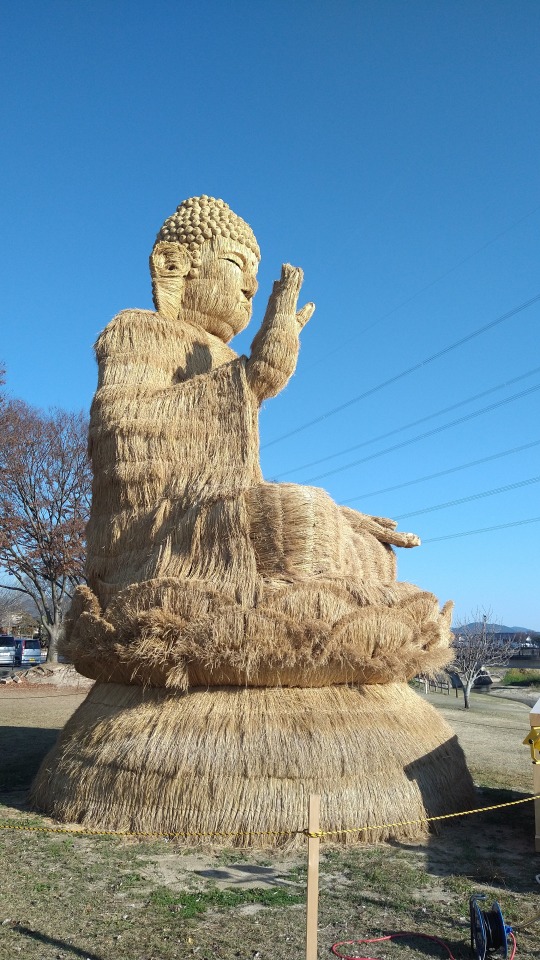
2023.12.4 ~ 筑前町の巨大わらかかし
1 note
·
View note
Text

[Image above: D. T. Suzuki (11 November 1870 - 12 July 1966) was a Japanese Buddhist scholar and doctor of literature. ]
A message from 23 nights temple Q&A: Part 2 [Part 1]
Next question was, want to know more about Tendai Buddhism and how to do face-to-face learning outside of Japan:
More than 1,400 years after its introduction, Buddhism in Japan was born from the founders of sects in Japanese history and culture. Today, about 13 major sects exist, including the Tendai sect. Of these, three are Zen sects: the Soto, Rinzai and Obaku.
Among them the most representative are, Saicho, founder of the Tendai sect, whose head temple is Enryaku-ji on Mt. Hiei; Kukai, founder of the Shingon sect, who brought esoteric Buddhism to Japan, whose head temple is Kongobu-ji on Mt. Koya; and Dogen, author of the Shobogenzo, a philosophy book said to be a manual for Zen meditation practice and originator of mindfulness. Founder of the Soto sect, whose main temple is Eiheiji Temple.
Buddhism means 'Buddha's teachings'. In the beginning, everything was transmitted orally and it was only after Buddha's death that documents and scriptures were created. All of the Buddhist scriptures that remain today were described by the memory of Buddha's disciples. In the meantime, it underwent various transformations through the views of translators and other factors, and representative gurus from different countries established and divided into sects. The Tendai sect is one of these sects, founded by Master Saicho. Incidentally, my trusted teacher is a Zen monk of the Soto sect, and he says that one should not be confined to a sect. It is because Dogen, the founder of the Soto sect, taught that the Buddha's teaching is one and that we should not be obsessed with sects.
Those wishing to study face-to-face or Buddhist thought outside Japan should visit your local Buddhist temple or Zen centre. You can easily find one by hitting the usual keywords. However, not all are good teachers. It is recommended to search patiently for a teacher or centre that suits you. For international learners, books by Japanese Buddhist scholar D.T. Suzuki are relatively accessible. He wrote on Zen in English and introduced Japanese Zen culture to the rest of the world. He was also a prolific translator of Chinese, Korean, Japanese, Vietnamese and Sanskrit literature.
In fact, the teachings of Zen that we are learning are not like there is a holy scripture that says this is the absolute truth, nor is there a founder who says that this is the absolute truth.
And it is best not to decide on a teacher based on sect or culture, but to knock on the door of a person you can identify with. More importantly, he or she may not only be in the temple.

二十三夜堂からのメッセージ Q&A: その2 [その1]
次の質問は、天台宗についてもっと知りたい、日本国外で対面で学ぶ方法を知りたいというものでした:
伝来から1400年余りの年月を経て、日本の歴史文化のなかで、宗派の開祖たちから生まれたのが「日本の仏教。 現在、大きな宗派として存在しているのは、天台宗を含め約13宗派。その中で禅宗は、曹洞宗、臨済宗と黄檗宗の3宗。
中でも代表的なのは、天台宗の開祖の最澄、総本山は比叡山延暦寺、日本に密教をもたらした、真���宗の開祖の空海、総本山は高野山金剛峯寺、そして、坐禅修行のマニュアルとも言われている哲学書「正法眼蔵 (しょうぼうげんぞう)」の著者でマインドフルネスの元祖、曹洞宗の開祖の道元、大本山は永平寺など、が挙げられる。
仏教とは「ブッダの教え」という意味である。当初、全ては口頭で伝えられており文書·経典ができたのはブッダ没後のことだ。今日残っている仏教経典はすべて、ブッダの弟子たちの記憶によって記述されたもの。その間訳者の見解などを通して様々な変形を繰り返し、各国の代表的な教祖が宗派を立ち上げ分かれていった。天台宗はその一つで、最澄が立ち上げた宗派である。因みに私の信頼できる先生は曹洞宗の禅僧だが、彼は宗派に囚われるべきではないと言っている。というのも曹洞宗の開祖である道元禅師が「ブッダの教えは一つであり、宗派に執われるな」と教えていたからだ。
国外で対面学習や仏教思想を学びたいとご希望の方々は、ローカルの仏教寺院、または禅センターを訪ねてみると良いと思います。お決まりのキーワードを叩けば、すぐに見つかります。但し、全てが良い先生とは限りません。自分に合った先生やセンターを根気よく探すことをお勧めします。海外の方々は、日本の仏教学者、鈴木大拙氏の本が比較的手に入りやすいと思います。彼は英語で禅に関する著作を発表し、日本の禅文化を世界に紹介し、また中国語、韓国語、日本語、ベトナム語、サンスクリット語などの多作な翻訳者でした。
実際、私たちが学んでいる「禅」の教えは、これが絶対の真理だという聖典があるわけでも、これが絶対の真理だという教祖がいるわけでもありません。
宗派や文化で師を決めるのではなく、ご自分が共感できる門を叩くのが最良かと思います。もっと言えば、その人はお寺にのみいらっしゃるとも限りません。
109 notes
·
View notes
Text
【悲報】pHを「ペーハー」と呼ぶのはもはや老人だけだったwww
以下転載 https://x.com/choikichi_/status/1919202519609200703
子供が化学の勉強で、pHを「ピーエッチ」と読んでたので「ペーハー ね」と言ったら「先生がその言い方が許されるのは昭和までと言ってた」と言われてショックを受けている…という投稿が マジか:( ;˙꒳˙;):
・https://x.com/chan2001x/status/1919261128657625121
ぐぐってみると1980年ぐらいからピーエイチ優勢か。 大人になってからph触れる機会ない人は読み方アップデートされない昭和脳のままですね🥹 https://otonanswer.jp/post/77553/

・https://x.com/StreetPortrait/status/1919500046263046446
pHスケールを考案したSørensen氏(デンマーク人)はpHについて仏語と独語とデンマーク語で発表した様です。だから英語読みは元々はあり得ないです。ドイツ語読みのペーハーで合ってる気が。ロシア人はエルエヌって読んでるかもしれませんが、日本人がエルエヌと言わないのと同じくらいピーエイチも変。

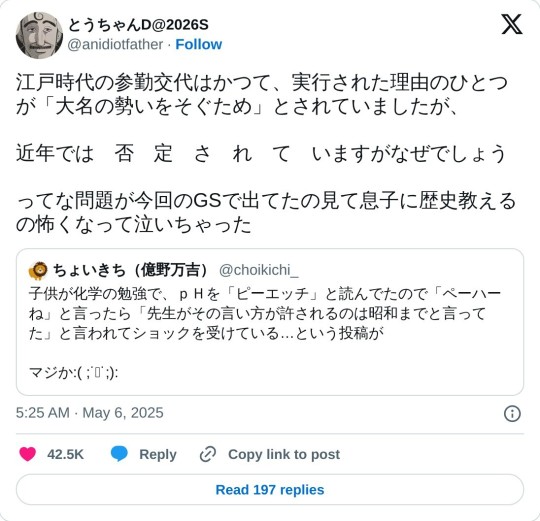


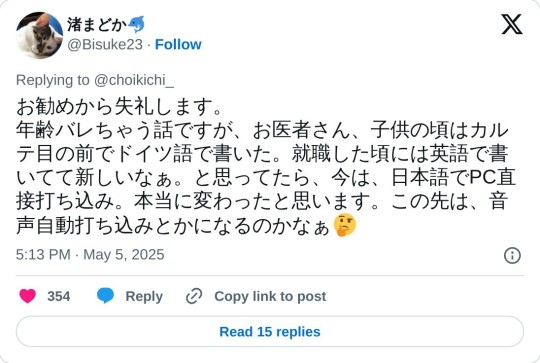
25 notes
·
View notes
Text




タイ国チュラロンコン大王像
当山開基タイ国ラーマ5世チュラロンコン大王像
本堂西側に日タイ修好100周年記念として1987年(昭和62年)建立
タイの大王様が開いたお寺ってこと🐘?

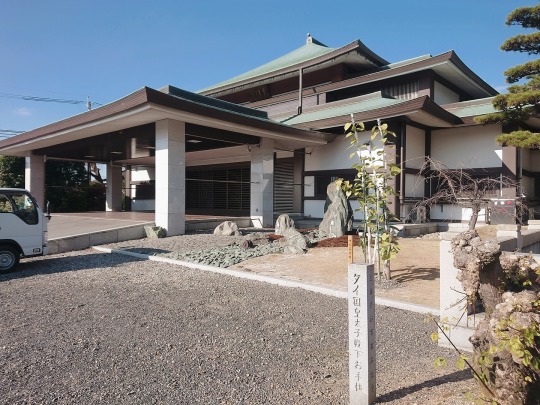

毎月21日(縁日)は歩行者天国になるので参道から日泰寺境内まで駐車禁止だそうで、次回は縁日に行ってみたいと思ってたけど、臨時駐車場🅿️てどこになるんだろう?
山門の仁王像も撮るの忘れた😵💦
0 notes
Text

1961年 映画「釈迦」
監督:三隅研次
脚本:八尋不二
舞台美術:伊藤熹朔
音楽:伊福部昭(演奏:東京交響楽団)
製作:大映(大映京都撮影所)
出演:本郷功次郎、チェリト・ソリス、勝新太郎、市川雷蔵、山本富士子、川口浩、中村玉緒、京マチ子、山田五十鈴、杉村春子、東野英治郎、中村鴈治郎、市川壽海、市田ひろみ、榊原舞踏団、大阪松竹歌劇団ほか
日本初の総天然色シネマスコープ70mmフィルムによって製作された釈迦の生涯を描いた作品。
「天上天下唯我独尊」
紀元前5世紀、インドのカビラ城でジッダ太子(釈迦)が生まれる。
ジッダが生まれた時、近くにいた修行僧のアシュダ仙人が、後にこの子が世界を救う人物になると予言する。
大人になったジッダ太子(釈迦)は結婚して幸せな毎日を送る中、お忍びで街を見て歩くと、そこには身分差別で虐げられる多くの平民の姿が・・。
それを見たジッダ太子は、貴族の王子である自身の恵まれた環境に疑問と無常感を覚え、悩んだ末に王の座を捨てて出家し、修行の旅に出る。
やがてジッダは菩提樹の下で6年間の瞑想の行に入ります。
厳しい修行と瞑想の最中、森からは様々な魔羅(釈迦が悟りを開く禅定に入った時に、瞑想を妨げるために現れたとされる悪魔)が現れ、悟りの邪魔をしようと太子を誘惑して攻めてきますが、そこに帝釈天の化身である村の女サヤが現れてジッダを助け、遂にジッダは悟りを開き釈迦(ブッダ)となります。
(このシーンが現代舞踏芸術のようで見応えがある)
村では赤ん坊をさらって殺すことを繰り返すカリティという女の夜叉が、釈迦の仏術によって自らの子供も同じ目に合わせられ悲しみに暮れる中、釈迦が現れ、殺生の愚かさを諭され改心して釈迦の重臣的な弟子となります。
干ばつの時には雨を降らせ、時には盲目の王子の眼に光を甦らさせ、釈迦の許には国中から教えを乞うて人々が集まるようになり、それに嫉妬した従兄のダイバ・ダッタはバラモン教・シュラダ行者の下で修業し神通力を得てブッダと壮絶な戦いをします。
ダイバ・ダッタが無実の罪で仏教徒を火刑の生贄にしようとするのを見た仏陀の怒りは奇跡を呼び、ダイバ・ダッタの造った神殿と共にダイバは地割れに呑みこまれていく・・。
もはや、釈迦が叶う相手ではないと悟ったダイバ・ダッタは涙を流しながら仏法の真理に降伏し釈迦の弟子となりました。
老いて、命もあとわずかとなった釈迦は、村の二本に並んだ沙羅双樹の間に横になり、
「比丘たちよ、今こそおまえたちに告げよう。諸行は滅びゆく。怠ることなく努めよ。」
との最後の言葉を弟子と信者に残し静かに入滅しました。
比丘とは:出家して具足戒(僧侶の守る戒律)を受けた修行者を指す言葉
釈迦役の本郷功次郎は悟りを開いた後、ほとんど姿を現さない独特な表現で描��れ、神々しさが倍増してました。
(確かに、こういうのってなかなかのセンスだよね)
のちに「五比丘」と呼ばれる一番弟子や十大弟子などの釈迦の高弟たちも登場します。
歌舞伎や新劇、大映スターなど、当時の人気俳優総出演の和製「スパルタカス」のような壮大な映画で、セットにも尋常じゃないくらいお金がかかっているのがわかります。
アニメーションもしばしば登場していますが、これはピープロダクションのうしおそうじ氏の作品だそうです。
精巧な作画を実景に合成する「作画合成」は、合成作画技師・渡辺善夫が担当。
「生合成」という特殊手法合成の第一人者です。
シネマスコープ70mmフィルムの現像は当時日本で出来なかったため、英国のロンドン・テクニカラー社のラボラトリーで現像。
(当時、相当金かかったろうな)
劇中音楽は京都のスタジオで録音され、こちらも英国の「RCA」スタジオでミキシング・トラックダウンされました。
(「RCA」って超一流スタジオじゃないですか!)
釈迦の生涯を描く大作映画の制作は国際的な話題となり米国の雑誌「タイム」誌の1961年8月11日号では、細かなシノプシスが紹介されたそうです。
24 notes
·
View notes